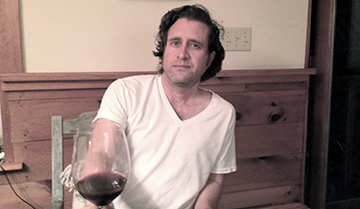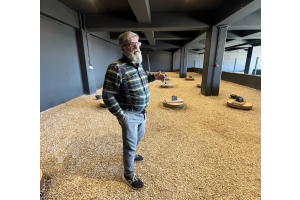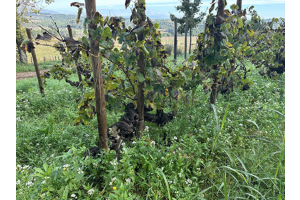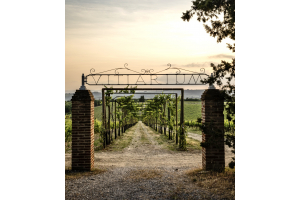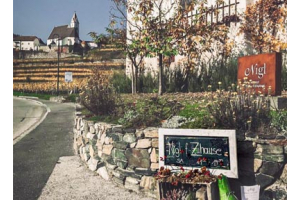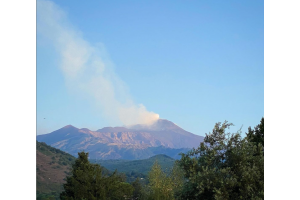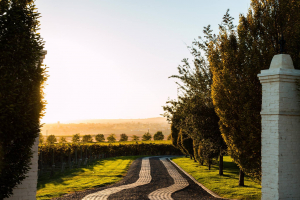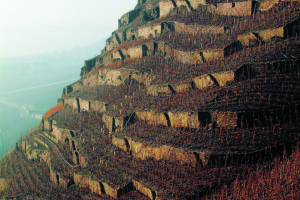Standing in the shadow of Europe's most active volcano, a new generation of winemakers is revitalizing one of Italy's most distinctive and dramatic wine regions. Generazione Alessandro is a project of three cousins (Benedetto, Anna, and Benedetto) and their fathers. The cousins are fourth-generation winemakers who represents the vanguard of Etna's winemaking renaissance. Born into a family with deep viticultural roots in western Sicily, the cousins made the bold decision to expand their family's winemaking legacy to the slopes of Mount Etna in 2016, joining a diverse community of producers drawn to this extraordinary terroir from across Italy and around the world.
What makes Etna so captivating to today's generation of winemakers? The answer lies in its singular combination of geological and climatic factors. Volcanic soils thousands of years in the making create a patchwork of distinct terroirs that can change dramatically within the span of just a hundred meters. The mountain's significant elevation—with vineyards climbing above 1,000 meters—provides the cool temperatures needed for elegant, balanced wines in an otherwise Mediterranean climate. Meanwhile, its unique position on Sicily's eastern coast creates fascinating microclimates across its north, east, and south faces, each imparting different characteristics to the wines produced there.
The region's viticultural history stretches back to ancient Greece, with references to Etna's wines appearing even in Homer's Odyssey. The 19th century represented a golden age for Etna viticulture, when the mountain boasted the highest density of vineyards in all of Sicily. However, the rise of mechanization following World War II led to the abandonment of many high-altitude vineyards that were difficult to access with modern equipment. Only in the 1990s did a revival begin, gaining momentum into the 21st century as winemakers rediscovered the exceptional quality potential of Etna's indigenous grape varieties.
 Grape Collective speaks to winemaker Benedetto Alessandro about his experiences on Etna. In addition to his involvement with Generazione Alessandro, he co-owns a winery, Monteleone, on Etna with his wife Giulia Monteleone.
Grape Collective speaks to winemaker Benedetto Alessandro about his experiences on Etna. In addition to his involvement with Generazione Alessandro, he co-owns a winery, Monteleone, on Etna with his wife Giulia Monteleone.
Christopher Barnes: Talk a little bit about your family history and the history of the estate on Etna.
Benedetto Alessandro: I actually am the fourth generation vine grower in my family. My great-grandfather started planting the first vineyard in western Sicily, Campo Real town, province of Palermo. My family used to sell grapes for many decades until 1999. Because in 2000, the third generation, my father and two of my uncles built the winery.
2000 was our first vinification, our first production of wine. Finally, the fourth generation, so me and my cousins Benedetto and Anna, decided to start producing wine on Etna in 2016. We bought the first four acres of empty soil in 2016. Actually, it used to be a very old hazelnut plantation, completely abandoned. We took more than one year to replace all the hazelnuts and prepare the soil in order to plant the young vineyards.
Finally, we had a very small crop in 2018. So our first vinification of Trainara Etna Bianco, a blending of about 85% Carricante, 15% Catarratto. And the Croceferro Nerello Mascalese also 100%. So that was the 2018 vintage. And finally 2019 was when we had the first regular crop.
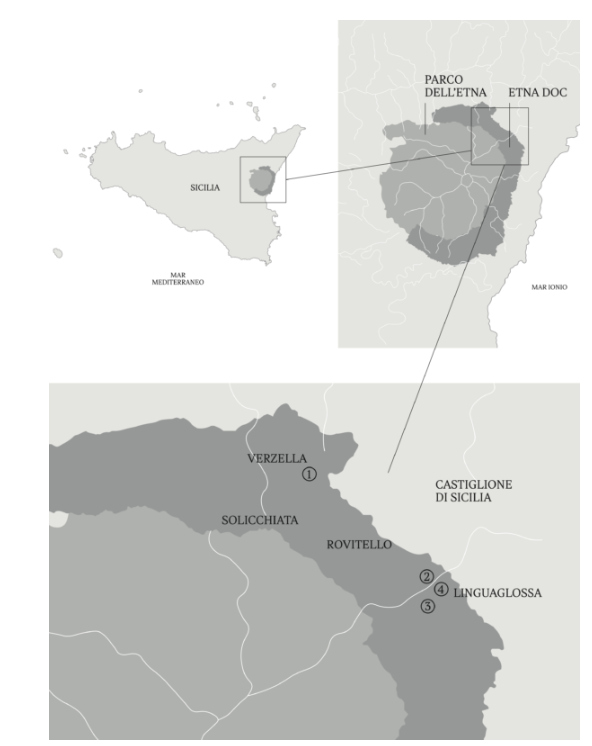 We are located in Linguaglossa, which I define as the border between the east face and the north face of Etna. We are facing exactly northeast. So it's a nice combination of the coolest and not so rainy climate typical from the north slope of Etna, and at the same time, good amount of humid, cool breeze coming from the east from the Ionian Sea. So we can have very nice results with very mineral style and dry style of Carricante, and very gentle, elegant, light style of Nerello Mascalese.
We are located in Linguaglossa, which I define as the border between the east face and the north face of Etna. We are facing exactly northeast. So it's a nice combination of the coolest and not so rainy climate typical from the north slope of Etna, and at the same time, good amount of humid, cool breeze coming from the east from the Ionian Sea. So we can have very nice results with very mineral style and dry style of Carricante, and very gentle, elegant, light style of Nerello Mascalese.
In 2021 vintage, we decided to increase our production with two more wines. After the first three years of vinification on Etna, we decided to focus more on diversifying the small plots of old vineyards. We found the first vineyard of very old vines, about 60 years old in Linguaglossa, in Contrada Sciaramanica, one of the earliest contradas we have in Linguaglossa. We started producing the Sciaramanica Etna Rosso. Very small production of these old vineyards.
(Map of Mount Etna: 1 Contrada Grasà – Castiglione di Sicilia, 2 Contrada Palmellata – Castiglione di Sicilia, 3 Contrada Sciaramanica – Linguaglossa , 4 Contrada Borriglione – Linguaglossa)
The same year we started producing the Etna Rosato. Not from old vineyards, but from a very small, peculiar part of the young vines of Nerello Mascalese that was planted in 2016 by my family. This small plot is surrounded by woods, so it's a specific microclimate with not so much sand, pretty humid, very deep, sandy, vigorous soil.
In that case, we hardly reach perfect phenolic ripening in order to produce an interesting and important Etna Rosso. So we decided to focus on Etna Rosato for that small amount of grapes, in not a very usual style, because we decided to let it age for almost one year. It's a blending of about 80% stainless steel, but also 20% big French oak. So a much more complex, deep style of Etna Rosato not to be drunk young, and with very interesting potential for aging.
So Benedetto, one thing that I think is fascinating is that Sicily, that Etna has had so many different cultures come in and occupy and provide different elements to what is now Sicilian and Etna cultures. And with Etna in terms of modern winemaking, in a similar way, you have people from Belgium, people from the United States, and also people from other parts of Italy and people like yourself from other parts of Sicily that have come here. Maybe just talk about why you were drawn to Etna and a little bit about the richness of these different cultures that have brought to Etna and Sicily over time.
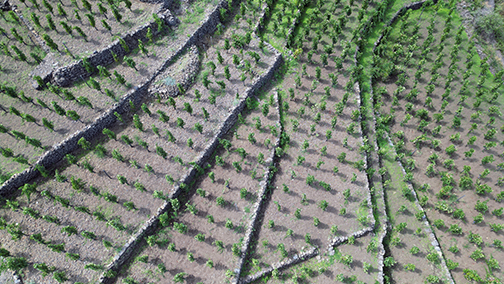 Etna is enriched by winemakers coming from many different countries of the world or many different regions of Italy. I think it is very important and it will be for sure in the future decades a big growth for the importance of the wine of this appellation.
Etna is enriched by winemakers coming from many different countries of the world or many different regions of Italy. I think it is very important and it will be for sure in the future decades a big growth for the importance of the wine of this appellation.
Because in these days, the world is big and is going very fast. So to stay open-minded is very important, to change point of view is very important, to understand what people like in other countries of the world is very important. And Etna is a small area where all people, older generations, didn't travel so much. They didn't know so much about the world. So I think that a big part of the success of the wines of the last decades is due to staying open-minded and changing point of view.
And talk a little bit about the pull of Etna, in terms of why do people want to make wine here? What is so exciting about Etna that people want to come here and make wine?
I think the energy of it is the most attractive thing for winemakers who decide to invest and decide to make wine on Etna. Well, I can tell you also about myself. When I started visiting Etna wineries, tasting Etna wines since, let's say, 2010, 2012, when I started making wine by myself. At the beginning, I thought Etna was just fashion, the myth of the volcano, of the lava flowing and all this stuff.
As soon as I started making my own vinification on Etna, I realized that it's incredible. You can find the energy of the volcano, the saltiness, the mineral, the vibrance of a volcano in the wine. And I think this is extremely fascinating for winemakers from all over the world.
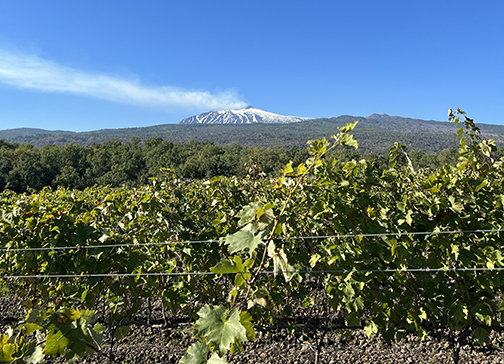 Something Marco de Grazia said, which I thought was very interesting, was he talked about how it has this immense power. And one thing it helps you is to understand your limits as a human being. Maybe just talk about understanding your limits in terms of the scope of that, and being part of that.
Something Marco de Grazia said, which I thought was very interesting, was he talked about how it has this immense power. And one thing it helps you is to understand your limits as a human being. Maybe just talk about understanding your limits in terms of the scope of that, and being part of that.
Since I started making wine on Etna, I started feeling really small compared to nature. Because here you almost every day can feel the real power of nature. So you start understanding your limits and above all, respect your limits. And here I can really feel part of nature because I feel that I cannot modify the natural landscape of this area. This is very different from many appellations around the world which are basically monocultural. Here we really feel part of the nature.
I have to respect it. And at the same time, at the end of the year, I feel really pleased and grateful when I taste the wines that this terroir can produce perfectly.
And a little bit about the terroir here. You know, Frank calls it an island within the island. Marco De Grazia calls it changeable terroir, that each lava flow has a different composition. You also have the altitude.
Etna is an incredible mix of factors creating really a unique terroir, completely different from the rest of Sicily. For this reason, the definition of the island within an island for basically all aspects.
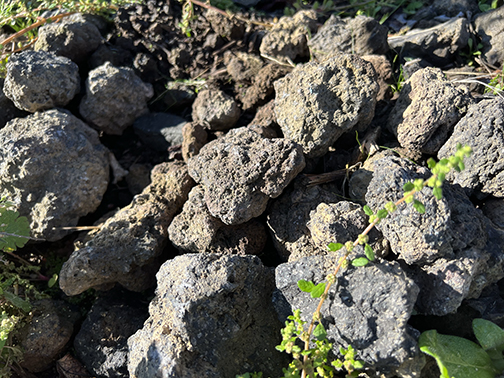 First of all, the soil, pure volcanic, but "volcanic" is too generic because actually, every single lava river, every single lava explosion in the centuries was characterized by different mineral composition. So it's volcanic soil everywhere around the appellation. But as soon as you move on for 100 meters, the composition of mineral and the texture of the soil change completely.
First of all, the soil, pure volcanic, but "volcanic" is too generic because actually, every single lava river, every single lava explosion in the centuries was characterized by different mineral composition. So it's volcanic soil everywhere around the appellation. But as soon as you move on for 100 meters, the composition of mineral and the texture of the soil change completely.
Elevation, this is one of the only places in Sicily where you can reach such an elevation, often areas higher than 1,000 meters. And the climate is incredible because in just a few kilometers where that can change completely. Etna being a volcano, a proper cone, is the big advantage of enjoying the four different faces of the volcano.
So you move from north, which is the paradox here on Etna of being very cool, especially during night because of the north position, but at the same time due to the neighbor or the chain of mountains that protect the north face of Etna from the Tyrrhenian Sea. They create like a shelter against many storms coming from north. So the paradox is that north face of Etna is very cool, but not so rainy at the same time. So a very peculiar microclimate.
As soon as you drive less than 20 kilometers, you move east. You are like in proper terraces in front of the sea. So a lot of humid breezes. In 20 kilometers you move from, let's say 600 to 700 millimeters of rainfall in the North Slope to more than 1,200-1,300 of rain in the east face. And there, even if it's not raining, you have a lot of filtered light. You have a lot of cloudiness almost every day.
And finally, you move south, where you have proper Mediterranean climate, a lot of sun, a lot of sun radiation, especially southwest position. During June, July, basically you are kissed by the sun until 9 p.m. Dry conditions.
So everything changes in just a few kilometers.
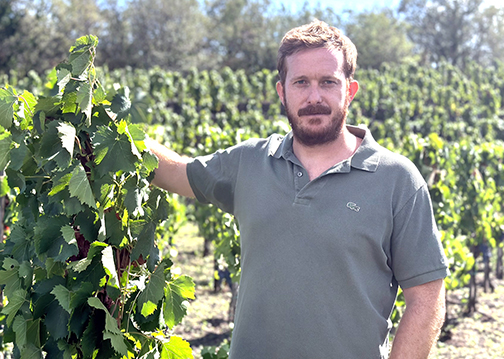 Talk a little bit about the importance of wine historically. The Greeks made wine here. Homer wrote about the Cyclops' cave and him being made drunk by Odysseus in The Odyssey. So it has this very important cultural aspect to it, wine specifically on Etna.
Talk a little bit about the importance of wine historically. The Greeks made wine here. Homer wrote about the Cyclops' cave and him being made drunk by Odysseus in The Odyssey. So it has this very important cultural aspect to it, wine specifically on Etna.
Wine has been very important for Etna since ever, of course. For sure the first vines arrived on Etna through the Greeks. All the other civilizations, Romans, kept vines continuing, the cultivation of vines. Hundreds of myths talk about the grapes and wine on Etna.
For sure the most important century that we know for viticulture on Etna was the 19th century. At that time, especially the second half of 19th century, just before the arrival of phylloxera, Etna was the highest density vineyard of all Sicily. Much, much more than what is now western Sicily.
Finally, there was a huge decrease in terms of number of hectares in the first stage in the first half of the 20th century. And my opinion is not so much for the phylloxera, because actually the volcanic soil can be very resistant to the phylloxera, but more for the increase of mechanization that we had after World War 2. Considering mechanization during the 1950s and '60s, many vineyards on Etna, the highest in quality in the higher altitude lost importance.
The most important thing in my opinion that Etna lost during the two or three decades was the know-how. Finally, in the early '90s, Etna started utilizing the modern managing of viticulture and winemaking, and starting from 2000, we can say we are producing wine with consideration of the modern techniques, still keeping in mind, of course, tradition. But according to the modern market.
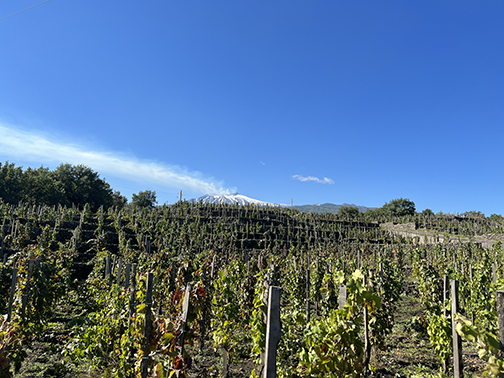 One thing that would be very helpful is if you could just explain what a palmento is.
One thing that would be very helpful is if you could just explain what a palmento is.
A palmento is a very old winery, when there was no electricity. So basically until, for sure, the end of the 19th century. The palmento usually is made in three levels in order to work completely by gravity without any mechanical pumps.
The first step is always crushing grapes by feet. Usually the most traditional technique was a very quick maceration for no more than two or three days in large concrete vats, where you were able to walk on it. And then there was diversification between liquid that used to go by gravity directly in big casks and skins and seeds that were pressed with the classical chianca, which is a very old vertical press, basically.
The palmentos used to be like a proper, very old stone house. Actually, the first palmentos used to be roofless. Then they became like a proper house. There were very big palmentos that were used in common by many families. Every family that owned small parcels of vineyards were able, using a common palmento, to produce their own small bottles of wine.
Talk a little bit about your philosophy of viticulture and winemaking here.
Our philosophy for producing grapes and wine on Etna, I think the most important thing is purity. We ideally want to reach elegance. Try to respect the most we can the natural characteristic of the grapes, to reach balance, and to try to produce a modern style of Etna.
We are organic certified. We try to modify the less we can our grapes. And I think our goal is to find the melting point between respecting the purity of the grape, but at the same time, try to produce a modern style of Etna suitable also for the foreign market. We believe this is very important because I think the next step of the appellation is to be well known all around the world. So respecting tradition, but suitable for modern market at the same time.
 Talk about the connection of the winemakers to this incredible force of nature that people live on, the volcano.
Talk about the connection of the winemakers to this incredible force of nature that people live on, the volcano.
One of the first times I visited Etna, about 15 years ago now, I felt a lot of precariousness while I was driving, visiting different vineyards on Etna. I think this feeling is very important. It's a little bit scary.
Now, I almost every day drive in the middle of the vineyards, and next to a vineyard, I often have to cross a lava river of maybe 15, 20, 30 years ago. So, of course, I start thinking about what can happen one day, so it's scary. But at the same time, when I face the final result, I have a lot of energy for continuing investing and working in this terroir because the result is incredible and full of energy.
Talk a little bit about the volcano itself. It's quite a large area, isn't it? I think it's almost the size of New York City in total.
Etna actually is the last volcano we have in this area. The first was the Ellitico, that collapsed, creating the Mongibello, that was the second. And finally, after the collapse of the Mongibello, we finally had Etna, that was born around 550,000 years ago.
What is incredible is that Etna still has a huge biodiversity, first of all, because the major part of the soil, it's impossible to be cultivated. And second thing, because luckily viticulture is not the only important business in the area.
If you drive or walk around Etna, it's impressive how olive trees, pistachios, hazelnuts and even strawberry cultivation are so important for people from the volcano. Besides this, massive diversity of the soil is huge. And sometimes you can even find very small plots of Ellitico soil coming from the Ellitico, basically the grandfather of Etna, especially in the southwest in the area of Biancavilla and Santa Maria di Licodia, but also very small portions of soil in the north face between Passopisciaro and Randazzo.
Let's talk a little bit about your hopes for the future of Etna. I think one thing that Marco de Grazia has said, which I thought was very interesting, was that he can see what happened in Piedmont starting to happen in Etna. And there's almost a decadence that happens when you have success. A lot of people have come in, much of that is good. But how do you see the future? What are some of the challenges?
In general, I feel very positive about the future of Etna. I'm a little bit worried about maybe too big diversity in terms of styles of winemaking that we have on Etna. It's something very beautiful, very interesting to communicate. But sometimes too much diversity can confuse the clients, the wine lovers.
But in general, I stay very positive because traveling around the world, I realize that the world is big. There are so many countries that don't even know Etna. So in this case, I understand the potential that Etna wines still have in the modern market.
In general, maybe because I'm a winemaker, because I realized that often I have a very romantic view of the wine business, but I truly believe that the quality of the wines always wins. And from this point of view, Etna, especially considering global warming, has an incredible chance. Etna is one of the few examples in the world where global warming actually is helping in increasing often the quality of the wines. So for this reason, I feel very positive about the future of the appellation.
And talk a little bit about the relevance of Nerello Mascalese and Carricante. I think some of the winemakers call it the Burgundy of the Mediterranean. Just briefly about how you view these grapes.
I love these grapes because I think that on Etna, both of them are very shy, very respectful of the terroir and very well suited for modern wines, often low in alcohol, so delicate, gentle, fresh, mineral. And both varieties, so both styles of Etna Rosso and Bianco, I often say that they decrease sensation in the mouth. They are not adding, they're cleaning the palate. For this reason, they are extremely pleasing with food and perfect for modern clients.
